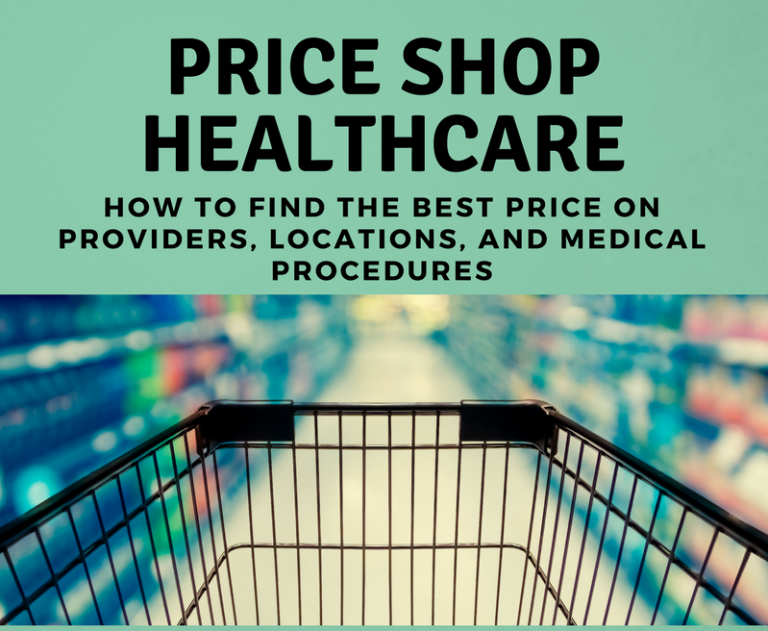
by admin | May 1, 2018 | Benefit Management, Group Benefit Plans, HSA/HRA, IRS

Friday, April 27, the Internal Revenue Service (IRS) announced that the 2018 annual contribution limit to Health Savings Accounts (HSAs) for persons with family coverage under a qualifying High Deductible Health Plan (HDHP) is restored to $6,900. The single-coverage limit of $3,450 is not affected.
This is the final word on what has been an unusual back-and-forth saga. The 2018 family limit of $6,900 had been announced in May 2017. Following passage of the Tax Cuts and Jobs Act in December 2017, however, the IRS was required to modify the methodology used in determining annual inflation-adjusted benefit limits. On March 5, 2018, the IRS announced the 2018 family limit was reduced by $50, retroactively, from $6,900 to $6,850. Since the 2018 tax year was already in progress, this small change was going to require HSA trustees and recordkeepers to implement not-so-small fixes to their systems. The IRS has listened to appeals from the industry, and now is providing relief by reinstating the original 2018 family limit of $6,900.
Employers that offer HSAs to their workers will receive information from their HSA administrator or trustee regarding any updates needed in their payroll files, systems, and employee communications. Note that some administrators had held off making changes after the IRS announcement in March, with the hopes that the IRS would change its position and restore the original limit. So employers will need to consider their specific case with their administrator to determine what steps are needed now.
HSA Summary
An HSA is a tax-exempt savings account employees can use to pay for qualified health expenses. To be eligible to contribute to an HSA, an employee:
- Must be covered by a qualified high deductible health plan (HDHP);
- Must not have any disqualifying health coverage (called “impermissible non-HDHP coverage”);
- Must not be enrolled in Medicare; and
- May not be claimed as a dependent on someone else’s tax return.
HSA 2018 Limits
Limits apply to HSAs based on whether an individual has self-only or family coverage under the qualifying HDHP.
2018 HSA contribution limit:
- Single: $3,450
- Family: $6,900
- Catch-up contributions for those age 55 and older remains at $1,000
2018 HDHP minimum deductible (not applicable to preventive services):
- Single: $1,350
- Family: $2,700
2018 HDHP maximum out-of-pocket limit:
- Single: $6,650
- Family: $13,300*
*If the HDHP is a nongrandfathered plan, a per-person limit of $7,350 also will apply due to the ACA’s cost-sharing provision for essential health benefits.
Originally posted on thinkHR.com

by admin | Apr 18, 2018 | Employee Benefits, Human Resources
 Did you know that you can save time and money on your prescription drugs by simply signing up for a discount card online? With savings as much as 80% off, these discount cards keep your health care costs down even when the prices of prescriptions are sharply rising. At no cost to the patient, discount drug programs negotiate the price of medicines with pharmacies and then pass the savings on to the consumer. These programs give subscribers a personalized discount card to be used at any pharmacy. While the discount card cannot be used in conjunction with health insurance, the consumer may see that the cost of their medicine is actually LESS with the card than it is with their insurance.
Did you know that you can save time and money on your prescription drugs by simply signing up for a discount card online? With savings as much as 80% off, these discount cards keep your health care costs down even when the prices of prescriptions are sharply rising. At no cost to the patient, discount drug programs negotiate the price of medicines with pharmacies and then pass the savings on to the consumer. These programs give subscribers a personalized discount card to be used at any pharmacy. While the discount card cannot be used in conjunction with health insurance, the consumer may see that the cost of their medicine is actually LESS with the card than it is with their insurance.
Another benefit to the consumer is that these programs will publish at which pharmacy you can find your medicine. This is especially helpful to the person who has specialty drug prescriptions. For example, Rebekah is prescribed a specialty drug for pain and neuropathy due to Multiple Sclerosis. This drug is not commonly stocked in pharmacies and so many times, she has had to wait for them to order it. By using the discount drug program, Rebekah is able to see which pharmacies have her medicine in stock and the estimated price.
So where do you start? Here are a few discount drug programs to investigate costs and providers for your prescriptions:
- staterxplans.us
- Provides free drug cards to reduce the out-of-pocket cost of prescription drugs.
- Click on your state and the site will redirect you to your corresponding prescription assistance program.
- goodrx.com
- Compares prices and discounts at thousands of pharmacies.
- Receive coupons via phone, email, or text to print or present for discounts.
- refillwise.com
- Free drug card to present at pharmacy for cost savings on prescriptions.
- Earn rewards each time you use their card—similar to credit card rewards. Each fill is 500 points and when you reach 5,000 points, you earn a gift card to various retailers.
Being a savvy consumer can save you money! Shop around to find the best cost for your prescription drugs and save time by locating the pharmacy that has your meds in stock. Discount drug programs are a great resource so do your research and find one that fits your needs.

by admin | Apr 11, 2018 | Employee Benefits, Human Resources
 When evaluating employee benefits, essentials such as health and dental plans, vacation time and 401(k) contributions quickly come to mind. Another benefit employers should consider involves subsidizing learning as well as ambitions. Grants and reimbursements toward advanced degrees and continuing education can be a smart investment for both employers and employees.
When evaluating employee benefits, essentials such as health and dental plans, vacation time and 401(k) contributions quickly come to mind. Another benefit employers should consider involves subsidizing learning as well as ambitions. Grants and reimbursements toward advanced degrees and continuing education can be a smart investment for both employers and employees.
Educational benefits are strongly linked to worker satisfaction. A survey by the Society for Human Resource Management revealed that nearly 80 percent of responding workers who rated their education benefits highly also rated their employers highly. While only 30 percent of those rating their higher education benefits as fair or poor conversely rated their employer highly.
These benefits are popular with businesses as well. In a survey by the International Foundation of Employee Benefit Plans, nearly five of six responding employers offer some form of educational benefit. Their top reasons are to retain current employees, maintain or raise employee satisfaction, keep skill levels current, attract new talent and boost innovation and productivity. Tax credits offer additional advantages. Qualifying programs offer employers tax credits up to $5,250 per employee, per year.
At the same time, companies should offer these benefits with care as they do pose potential pitfalls. Higher education assistance can be costly, even when not covering full costs. Workers taking advantage can become overwhelmed with the demands of after-hour studies, affecting job performance. Also, employers would be wise to ensure their employees don’t promptly leave and take their new skills elsewhere.
When well-planned, educational benefits will likely prove a good investment. Seventy-five percent of respondents to SHRM’s survey consider their educational-assistance programs successful. To boost your employee morale, skill levels and job-satisfaction scores, consider the benefit that may deliver them all, and more.
Find out more:
IFEBP: Why Educational Assistance Programs Work
EBRI: Fundamentals of Employee Benefit Programs
By Bill Olson, VP, Marketing & Communications at United Benefit Advisors
Originally posted on UBABenefits.com

by admin | Mar 28, 2018 | Benefit Management, Benefit Plan Tips, Tricks and Traps, Human Resources
 As the costs of health care soar, many consumers are looking for ways to control their medical spending. Also, with the rise of enrollment in high deductible health plans, consumers are paying for more health care out-of-pocket. From medical savings accounts to discount plans for prescriptions, patients are growing increasingly conscious of prices for their healthcare needs. Price shopping procedures and providers allows you to compare prices so that you are getting the best value for your care.
As the costs of health care soar, many consumers are looking for ways to control their medical spending. Also, with the rise of enrollment in high deductible health plans, consumers are paying for more health care out-of-pocket. From medical savings accounts to discount plans for prescriptions, patients are growing increasingly conscious of prices for their healthcare needs. Price shopping procedures and providers allows you to compare prices so that you are getting the best value for your care.
Why do you need to look beyond your nearby and familiar providers and locations for healthcare? Here’s a hypothetical example: Chris is a 45-year old male in good physical health. During his last check-up he mentions to his doctor that he’s had some recent shortness of breath and has been more tired as of late. His doctor orders an EKG to rule out any problems. If Chris went to his local hospital for this procedure, it would cost $1150. He instead looks online and shops around to find other providers in his area and finds he can get the same procedure for $450 at a nearby imaging center. His potential savings is $700 simply by researching locations.
So where do you start when shopping around for your health care? A good place to begin is by researching your health plan online. Insurance companies will post cost estimates based on facility, physician, and type of procedure. Keep in mind that these are just estimates and may vary based on what coverage you are enrolled in. Another way to shop is by checking out websites that have compiled thousands of claims information for various procedures and locations to give an estimate of costs. However, deciphering whether a site is reporting estimates based on the “medical sticker price” of charges or rates for private insurance plans or Medicare is difficult. There are huge differences in prices at different providers for the exact same procedure. This is because contracts between insurance agencies and providers vary based on negotiated amounts. This makes it hard to get consistent pricing information.
Check out these sites that do a great job comparing apples to apples for providers:
- Healthcare Blue Book
- What Kelly Blue Book is to cars, Healthcare Blue Book is to medical pricing
- New Choice Health
- Reports on pricing of medical procedures, providers, quality of facilities, and customer feedback for healthcare in all 50 states
- The Leapfrog Group
- Publishes data on hospitals so patients can compare facilities and costs for treatments and procedures
After compiling all the information on prices and procedures, you can still call and negotiate costs with the location of your care. Fair Health Consumer has tips on how to negotiate with providers and plan for your healthcare needs.
Knowledge is POWER and when you spend time researching and comparing healthcare costs, you are empowering yourself! Exercising due diligence to plan for you and your family’s medical needs will save you money and give you confidence in your decisions for care.

by admin | Feb 22, 2018 | Hot Topics, Human Resources
 Have you ever heard the proverb “Knowledge is power?” It means that knowledge is more powerful than just physical strength and with knowledge people can produce powerful results. This applies to your annual medical physical as well! The #1 goal of your annual exam is to GAIN KNOWLEDGE. Annual exams offer you and your doctor a baseline for your health as well as being key to detecting early signs of diseases and conditions.
Have you ever heard the proverb “Knowledge is power?” It means that knowledge is more powerful than just physical strength and with knowledge people can produce powerful results. This applies to your annual medical physical as well! The #1 goal of your annual exam is to GAIN KNOWLEDGE. Annual exams offer you and your doctor a baseline for your health as well as being key to detecting early signs of diseases and conditions.
According to Malcom Thalor, MD, “A good general exam should include a comprehensive medical history, family history, lifestyle review, problem-focused physical exam, appropriate screening and diagnostic tests and vaccinations, with time for discussion, assessment and education. And a good health care provider will always focus first and foremost on your health goals.”
Early detection of chronic diseases can save both your personal pocketbook as well as your life! By scheduling AND attending your annual physical, you are able to cut down on medical costs of undiagnosed conditions. Catching a disease early means you are able to attack it early. If you wait until you are exhibiting symptoms or have been symptomatic for a long while, then the disease may be to a stage that is costly to treat. Early detection gives you a jump start on treatments and can reduce your out of pocket expenses.
When you are prepared to speak with your Primary Care Physician (PCP), you can set the agenda for your appointment so that you get all your questions answered as well as your PCP’s questions. Here are some tips for a successful annual physical exam:
- Bring a list of medications you are currently taking—You may even take pictures of the bottles so they can see the strength and how many.
- Have a list of any symptoms you are having ready to discuss.
- Bring the results of any relevant surgeries, tests, and medical procedures
- Share a list of the names and numbers of your other doctors that you see on a regular basis.
- If you have an implanted device (insulin pump, spinal cord stimulator, etc) bring the device card with you.
- Bring a list of questions! Doctors want well informed patients leaving their office. Here are some sample questions you may want to ask:
- What vaccines do I need?
- What health screenings do I need?
- What lifestyle changes do I need to make?
- Am I on the right medications?
Becoming a well-informed patient who follows through on going to their annual exam as well as follows the advice given to them from their physician after asking good questions, will not only save your budget, but it can save your life!






